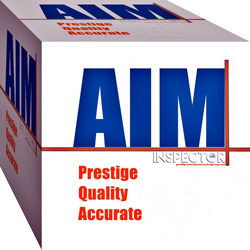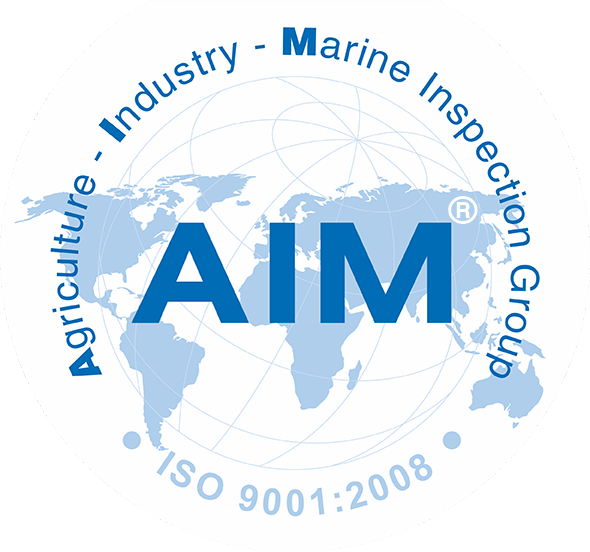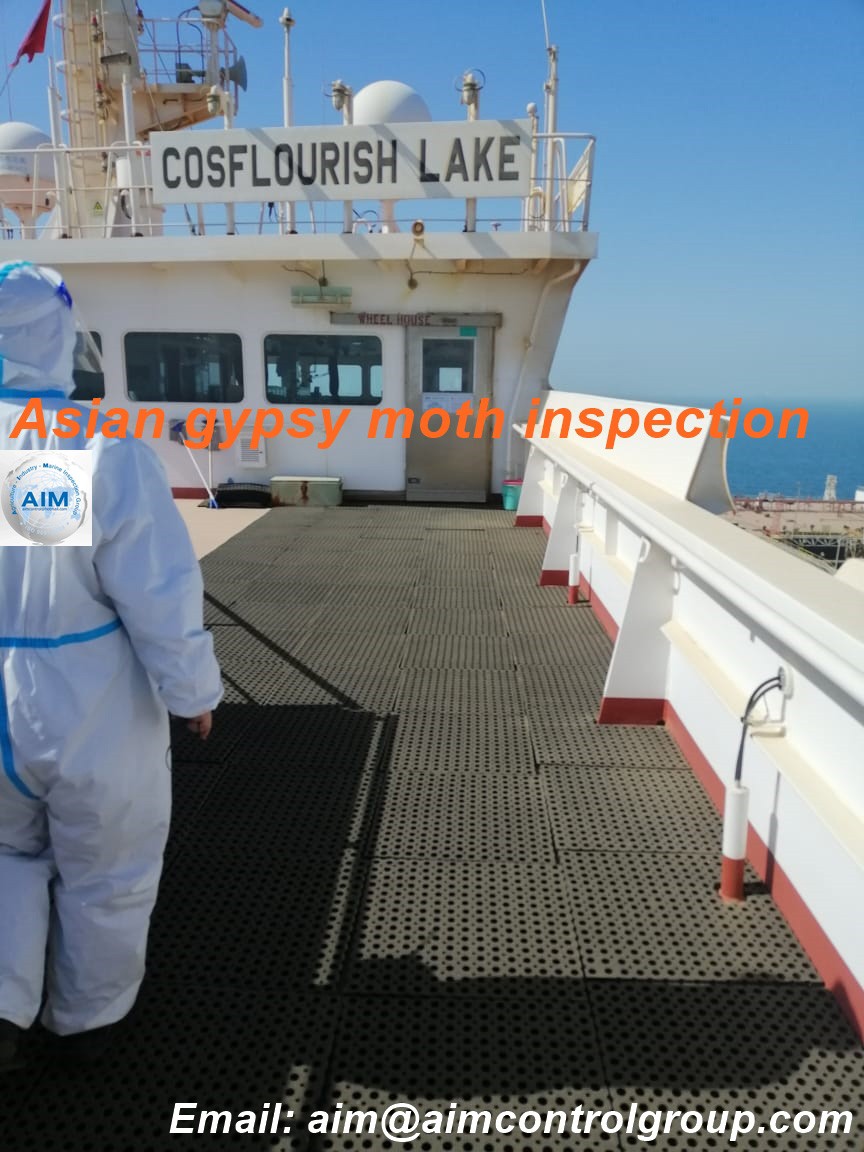Asian gypsy moth inspection certification
Asian gypsy moth inspection certification
Vessels must be inspected and must obtain pre-departure certification from a recognized certificate of Asian gypsy moth inspection certification body AIM Control (AIM Group®).
AIM Group Asian Gypsy Moth (AGM) certification is required for vessels sailing to high-risk port areas, and includes a formal inspection to ensure the vessel is free of the developing stages of AGM. AIM Group certification is necessary because these Gypsy Moths are a destructive forest pest that can cause damage to local ecosystems (crossing from one country to another). To be certified, the vessel must be inspected by us as close as possible to departure from the high-risk port, and following our inspection, a certificate issued to the Vessel confirming that the Vessel is free of this pest must be sent to agents in the destination country.
AGM Charter Party Clause
When negotiating charter parties, Members may wish to include the following clause if the vessel could be required to call at ports in the high-risk region during the flight period:
“Should Charterers order the vessel to a port, place, country or area infested by Asian Gypsy Moth ("AGM") or where there is risk of exposure to infestation by AGM as reasonably determined by the Master, Charterers shall take all reasonable steps at their time and expense to ensure that the vessel does not become infested. Without prejudice to this obligation, Charterers shall, at their time and expense, arrange for the appropriate certificate stating that the vessel is free from infestation by AGM, its larvae or eggs to be issued by an appropriate and recognised authority to the satisfaction of the Master just prior to departure from the last port of call within the high risk area during the flight season. Notwithstanding the issuing of such a certificate, Charterers will be responsible for any consequences whatsoever, including but not limited to time, costs and third party liabilities to cargo interests etc., howsoever arising, and the vessel to remain on hire/laytime to count (as applicable) should an infestation of AGM be found or suspected and/or should delays or costs be incurred due to charterers having ordered the vessel to call at a port, place, country or area where the presence of AGM is known or suspected.”
A copy of the certificate, stating that the vessel is free of Asian Gypsy Moth life stages, must be forwarded to US or Canadian agents.
It called: AGM ship inspection and certification
Some countries are requested U.S, Canada, Chile, Argentina, New Zealand, Mexico.
AGM is not present in North America. AGM may feed on over 600 plant species and can negatively impact North American's agricultural and natural resources
Any AGM detection on a vessel may require the vessel be:
• Ordered out of port and into international waters
• Required to undergo treatment

to Destroy egg masses by:
1. Placing egg masses in alcohol;
2. Boiling the egg masses in water; or
3. Incinerating the egg masses.
Noted:
AGM egg masses should never be discarded by throwing overboard as there have been instances where egg masses have floated to shore and continue to develop, hatch, and spread.
• Re-inspected
• Refused entry (if a ship is not free from Asian gypsy moth)
These circumstances may be minimized by adherence to strict sanitation standards involving the removal and destruction of all AGM egg masses prior to a vessel’s arrival in North America area.
AGM females are known to deposit egg masses while in specific eastern Asia foreign ports between May and October. Egg masses are the most likely life stage to be found on a vessel's parts
AGM –Egg Masses
AGM –Larvae or Caterpillars
AGM –Adult Moths
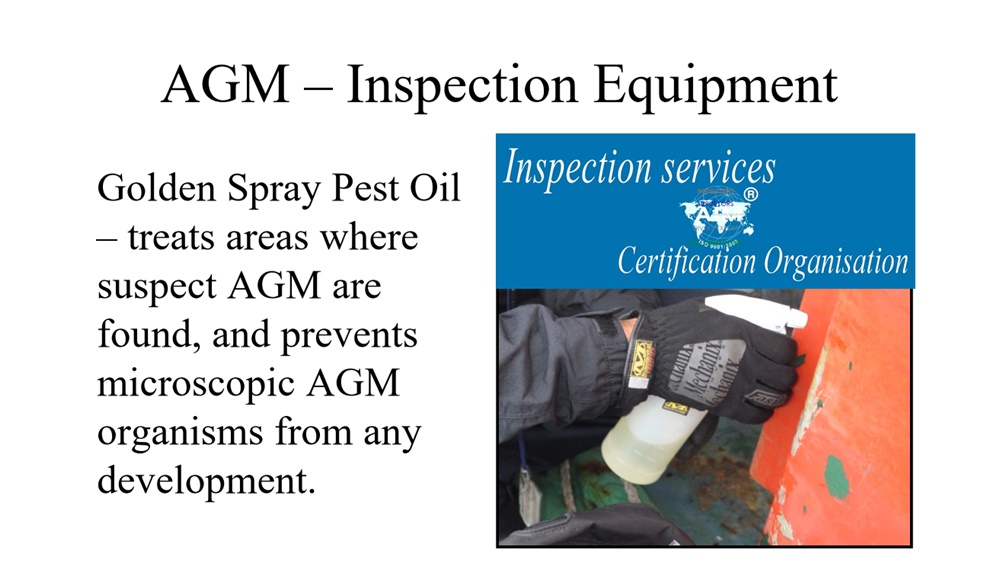
Vessel Operators Are Encouraged To:
• Search for egg masses
• Collect egg masses
• Destroy egg masses
Conduct Inspections for AGM prior to arrival
• Inspections:
–Increase preparedness for arrival
–Improves likelihood of freedom of movement
AIM Group's AGM inspections and certification for a ship
–Likely reduces AGM presence
–Prevents denial of entry
–Avoids costly schedule and operational delays
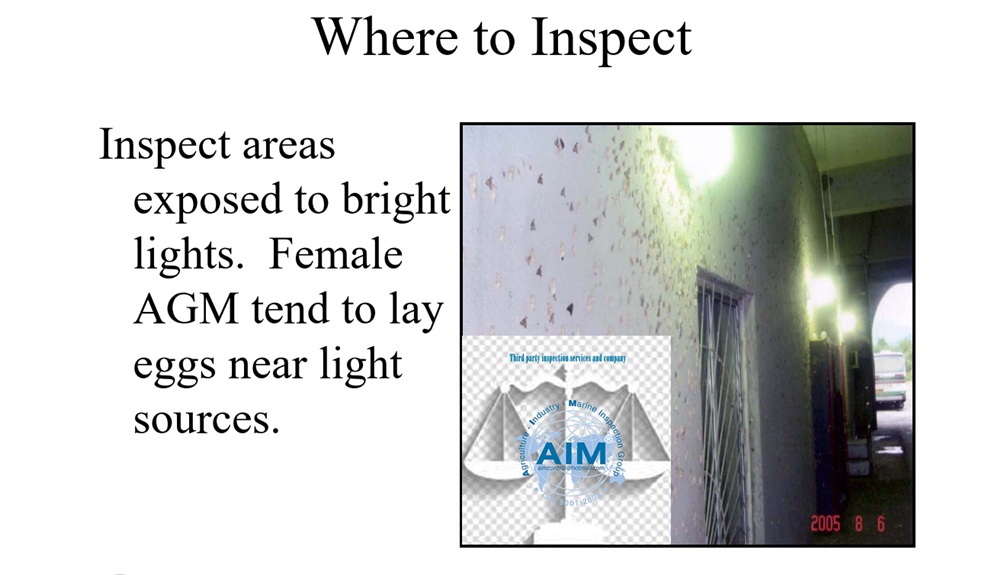
All positions of the ships
What to Expect
Vessels arriving from China, Japan, Korea, and far east Russia during designated periods should obtain certification prior to departure from these countries.
Vessels found to be infested with AGM will not be authorized to load or unload cargo until free from all life stages of AGM and may be denied access to U.S. ports.
What To Do Perform
A thorough visual inspection prior to overseas departure.
Perform a thorough visual inspection for AGM prior to arrival in the U.S. Scrape off, collect and properly destroy all AGM egg masses.
What NOT To Do
Do not paint over the AGM egg masses.
Do not use high pressure water to remove AGM egg masses.
Do not throw AGM egg masses overboard.
Ship owners who expect their ships to enter ports under the free regulations of FSMC (Flighted Spongy Moth Complex), need to contact AIM Group, we will provide
1. Advice and guidance for the Master and crew on the implementation of Ship Sanitation
2, On-site inspection and survey team
3. In case a Gypsy moth is found on board, we will advise on the method of elimination.
4. Issuance of a Gypsy moth certificate for that ship.
To request AIM Control (AIM Group®) Asian gypsy moth inspection certification, let kindly contact with AIM Control (AIM Group®) asap
Noted:
AGM survey includes the following: -
Before shipping of the vessel, it should be inspected and issued a certification from a recognized certification organization.
The certificate copy must be forwarded to the USA or Canadian agent, declaring that vessel is free of life stages of Asian Gypsy Moth.
Shipping lines prior to vessel entry in USA and Canadian ports should perform thorough self inspection on vessels to look for, remove, and destroy all egg masses in order to avoid vehicle re-routing, any delay in inspection and other steps taken to eradicate the chances of AGM entry.
At least 96 hours prior to cargo arrival at the port, vessel must provide two year port of call data to the agents who will hand over the same to the U.S. and Canada officials.
Vessels arriving at Australia do not require being AGM free certified. The Australian Quarantine and Inspection Service checks whether the vessel had been to any of the high risk ports such as China, Korea, Russia, Japan etc. during July 1 and September since last two years. If any such call has been made, the vessel has to disclose that in the meantime, whether or not it had been inspected and cleared by agricultural authority in Australia, Canada, Russia, New Zealand, USA etc.
Without certification vessels are at greater risk as AGM mitigation efforts have not been applied to them. Safeguarding methods are applied to vessels without certification, which results in some delay. Monetary penalties are issued when required certification is not presented. Canada imposes a huge sum as penalty under the Plant Protection Act if the vessel arrives at the port without AGM certification.
Vessels are subjected to undergo following actions:-
Non-certified vessel undergoes an AGM inspection at North American ports.
The certified vessel along with required certificates is checked in order to detect if there is any requirement for an inspection.
If AGM is suspected, re-inspection will occur.
If AGM is detected, vessel either removed from the port or re-routed.
